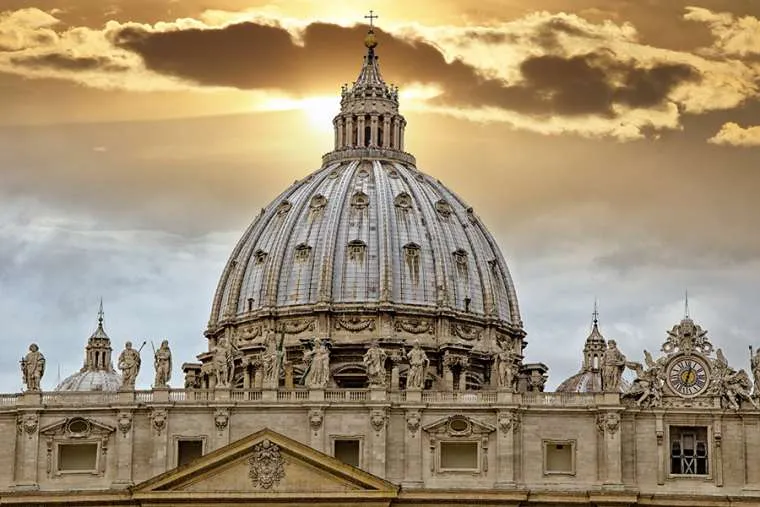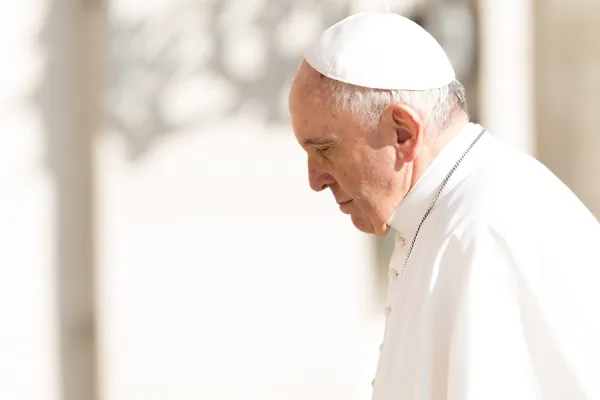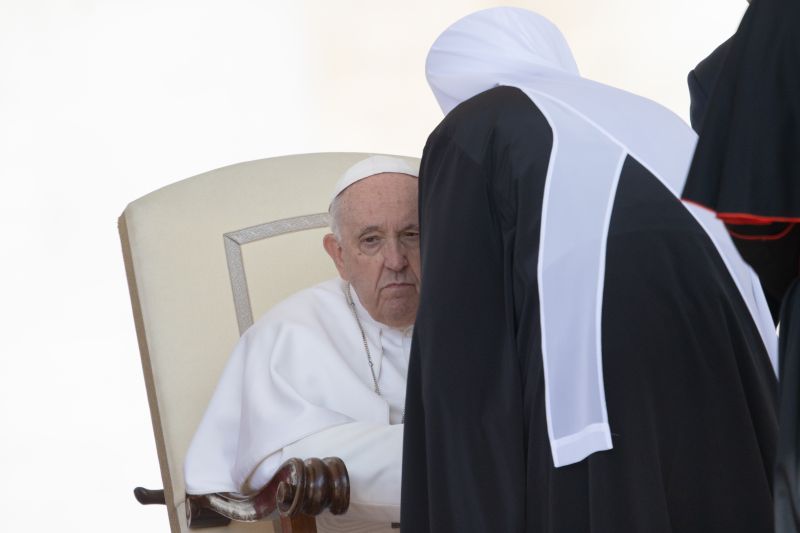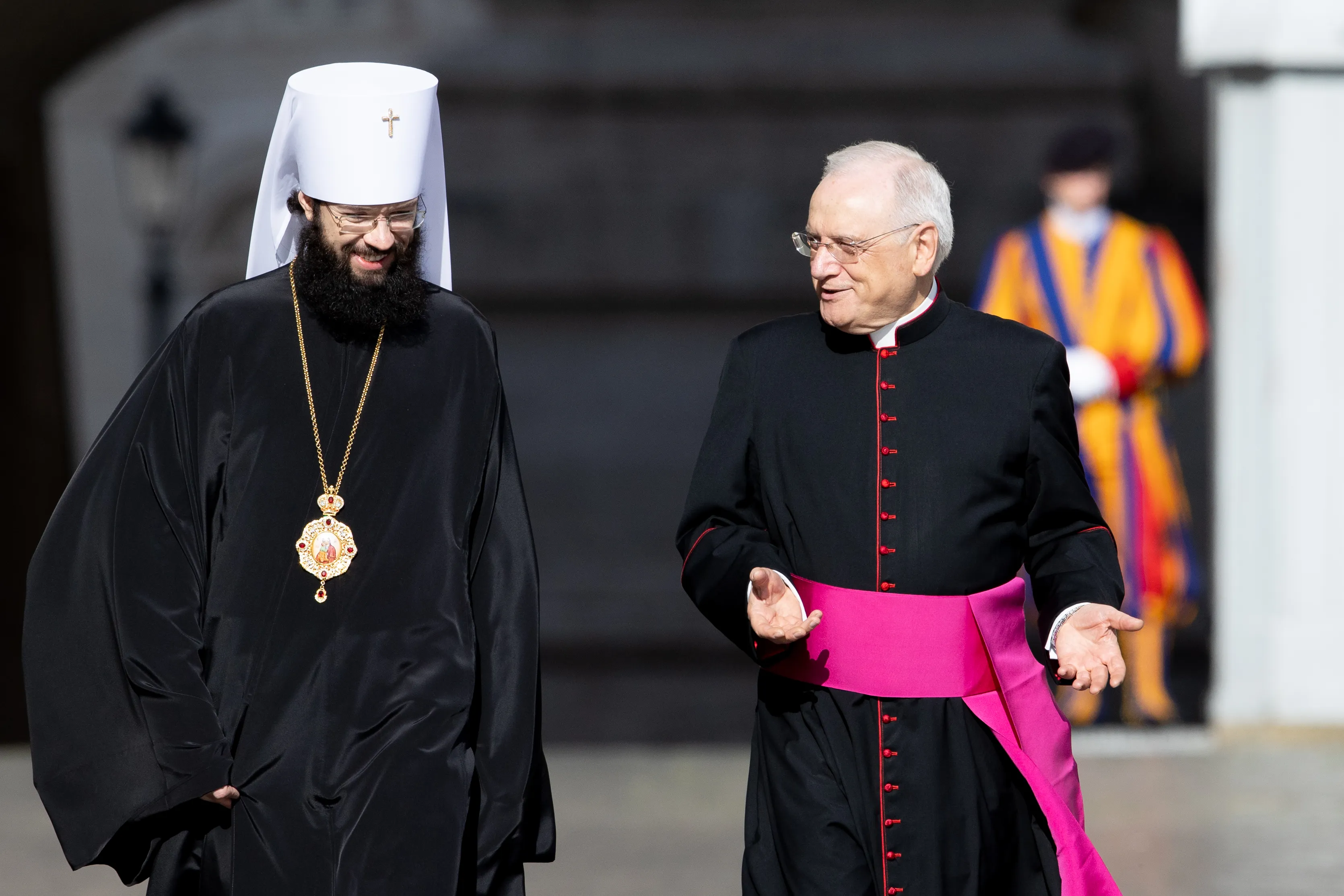
Vatican City, Mar 1, 2018 / 05:57 am (CNA/EWTN News).- A new letter issued by the Vatican’s doctrinal office has reaffirmed that Christian salvation can only come through Christ and the Church, and highlighted modern expressions of Pelagian and Gnostic thought which contradict this belief.
Signed by Archbishop Luis Ladaria SJ, prefect of the Congregation for the Doctrine of the Faith, on the Feb. 22 feast of the Chair of St. Peter, the letter is addressed to the world’s bishops.
It clarifies how the ancient heresies of Pelagianism and Gnosticism are diffused in modern culture, and urges Christians to evangelize while engaging with those from other religions in a spirit of genuine dialogue.
The four-and-a-half page letter consists of six points, including an introduction and conclusion, outlining the errors of Pelagianism and Gnosticism in light of Christian doctrine, and reaffirming Christ as the only means of salvation, which is offered through the sacraments.
According to the letter’s introduction, the aim in writing it is to “demonstrate certain aspects of Christian salvation that can be difficult to understand today because of recent cultural changes,” incorporating Pope Francis’ reflections on the issue.
Modern expressions of Pelagianism and Gnosticism
The letter pointed to the difficulty many have in accepting the teachings of Christianity in today’s society, noting that on one hand, “individualism centered on the autonomous subject tends to see the human person as a being whose sole fulfillment depends only on his or her own strength.”
In this view, Christ is seen as “a model that inspires generous actions with his words and his gestures,” but is not recognized as the one who transforms the human condition by incorporating mankind into a new, reconciled life with the Father.
On the other hand, the letter noted that “a merely interior vision of salvation is becoming common, a vision which, marked by a strong personal conviction or feeling of being united to God, does not take into account the need to accept, heal and renew our relationships with others and with the created world.”
Pope Francis, the letter said, has often spoken of these two tendencies, identifying them with the ancient heresies of Pelagianism and Gnosticism.
Pelagianism gets its name from the monk Pelagius, who lived in the 400s and taught that the human will, as created by God, was enough to live a sinless life. Gnosticism, on the other hand, was a widely diffused belief in the 2nd century that the material world is the result of error on the part of God.
Since the beginning of his pontificate Francis has spoken out about the two heresies, and in 2015 during his pastoral visit to Florence, told participants in the Fifth Convention of the Italian Church that Pelagianism and Gnosticism are two of the greatest temptations that lead the Church away from humility and beatitude.
In the speech, he said Pelagianism “spurs the Church not to be humble, disinterested and blessed,” and does so “through the appearance of something good. Pelagianism leads us to trust in structures, in organizations, in planning that is perfect because it is abstract. Often it also leads us to assume a controlling, harsh and normative manner.”
Norms, he said, “give Pelagianism the security of feeling superior, of having a precise bearing,” while Gnosticism “leads to trusting in logical and clear reasoning, which nonetheless loses the tenderness of a brother’s flesh.”
The attraction of Gnosticism, he said, is “a purely subjective faith whose only interest is a certain experience or a set of ideas and bits of information which are meant to console and enlighten, but which ultimately keep one imprisoned in his or her own thoughts and feeling.”
Likewise, in Cardinal Joseph Ratzingers’ 1986 spiritual exercises, the future Pope Benedict XVI also condemned the Palegian trend in modern society, calling it a “vice” and saying those who accept Palegianism “do not want forgiveness and in general they do not want any real gift from God either. They just want to be in order.”
“They don’t want hope they just want security,” he said, adding that “their aim is to gain the right to salvation through a strict practice of religious exercises, through prayers and action. What they lack is humility which is essential in order to love; the humility to receive gifts not just because we deserve it or because of how we act.”
In Thursday’s letter, Ladaria said a “new form” of Palegianism is spreading in today’s culture in which the individual, “understood to be radically autonomous, presumes to save oneself, without recognizing that, at the deepest level of being, he or she derives from God and from others.”
According to this thought, salvation “depends on the strength of the individual or on purely human structures, which are incapable of welcoming the newness of the Spirit of God,” the letter said.
However, a new form of Gnosticism is also widely diffused, promoting an understanding of salvation which is “merely interior, closed off in its own subjectivism.”
“In this model, salvation consists of improving oneself, of being intellectually capable of rising above the flesh of Jesus towards the mysteries of the unknown divinity,” the letter said. “It presumes to liberate the human person from the body and from the material universe” in which God is no longer found, “but only a reality deprived of meaning” and “easily manipulated by the interests of man.”
Comparing the two heresies is intended as a simple recognition of “general common features, without entering into judgments on the exact nature of the ancient error,” the letter said, emphasizing that there is a vast difference between modern, secularized society and the social context in which the heresies were born.
However, “both neo-Pelagian individualism and the neo-Gnostic disregard of the body deface the confession of faith in Christ, the one, universal Savior,” the letter said, and reaffirmed that “salvation consists in our union with Christ.”
Man’s search for salvation and Christ as Savior
The letter noted that each person, in their own way, seeks happiness and tries to obtain it through the means they have available.
Yet this desire is not always explicitly expressed, and is frequently “more secret and hidden than it may appear,” revealing itself only in situations of crisis, the letter said, noting that this desire can often be manifested as a desire for better health or economic well-being, and can be expressed as a need for interior peace and peace with others.
It also takes on the character of endurance and the desire to overcome pain, fighting off the “evil” of error, fragility, weakness, sickness and death.
Faced with these aspirations, faith, the letter said, teaches that in rejecting all attempts at “self-realization,” these desires “can be fulfilled completely only if God himself makes it possible, by drawing us toward Himself.”
“The total salvation of the person does not consist of the things that the human person can obtain by himself,” such as wealth, reputation or knowledge, the letter continued, noting that if redemption were judged solely according to the needs of mankind, “how could we avoid the suspicion of having simply created a Redeemer God in the image of our own need?”
The letter then emphasized that God has never stopped offering salvation to his people, and that this redemption has a concrete name and face in Jesus Christ.
Salvation, it said, doesn’t occur in just an interior manner, because Jesus was made flesh in order to communicate with mankind. And by becoming part of the human family, Jesus “has united himself in some fashion with every man and woman and has established a new kind of relationship with God, his Father, and with all humanity.”
Each person can be incorporated in this new relationship and participate in Jesus’ own life, the letter said, adding that Christ’s incarnation, “rather than limiting the salvific action,” allows him “to mediate the salvation of God for all of the sons and daughters of Adam.”
Given this understanding, when faced with the “individualist reductionism of Pelagian tendency, and the neo-Gnostic promise of a merely interior salvation,” Christians have to remember “the way in which Jesus is Savior.”
“He did not limit himself to showing us the way to encounter God, a path we can walk on our own by being obedient to his words and by imitating his example,” but instead opened the door to freedom and pointed to himself as the way.
This path, the letter said, “is not merely an interior journey at the margins of our relationships with others and with the created world,” but consists of a “new and living way” that Jesus inaugurated for mankind in his own flesh.
“Therefore, Christ is Savior in as much as he assumed the entirety of our humanity and lived a fully human life in communion with his Father and with others.”
Salvation is through the Church, the Body of Christ
The letter reaffirmed that the place where humanity receives the salvation of Jesus “is the Church,” beginning with baptism and continuing through the other sacraments.
“Both the individualistic and the merely interior visions of salvation contradict the sacramental economy through which God wants to save the human person,” the letter said.
Salvation cannot be achieved by one’s own individual efforts alone, as neo-Pelagian thought would argue, but is instead found “in the relationships that are born from the incarnate Son of God and that form the communion of the Church,” the letter said.
Likewise, it stressed that the grace of God leads us to concrete relationships that Christ himself formed, and of which the Church is an image.
Salvation, then, “does not consist in the self-realization of the isolated individual, nor in an interior fusion of the individual with the divine,” but rather means being incorporated “into a communion of persons that participates in the communion of the Trinity.”
While Gnosticism has a negative view of creation, seeing it as a limitation of man’s freedom and therefore implying that salvation means freeing oneself from the body and concrete human relationships, true salvation offered by Christ includes the sanctification of the body, the letter said.
With the sacraments, “Christians are able to live faithful to the flesh of Christ and, as a result, in fidelity to the kind of relationships that he gave us,” the letter said, explaining that under this rationale, care for those who are suffering is especially important, particularly through the spiritual and corporal works of mercy.
The letter closed urging Christians to advance in announcing the “joy and light of the Gospel,” while also establishing a “sincere and constructive dialogue” with those from other religions, believing that God can lead all men of goodwill toward salvation in Christ.
“Total salvation of the body and of the soul is the final destiny to which God calls all of humanity,” it said, and urged believers to look forward to the coming of Christ, who will “change our lowly body to conform with his glorified body by the power that enables him also to bring all things into subjection to himself.”
 […]
[…]







“We have formed symbolic figures such as the devil to express evil. Social conditioning can also represent this figure, since there are people who act [in an evil way] because they are in an environment where it is difficult to act to the contrary.” Fr. Arturo Sosa, S.J., Superior General of the Society of Jesus
Bergoglio continues to worry about “limping” modern translations. He’s all about “precision”…in the Jesuit sense of that word.
Has he ever corrected Sosa? No.